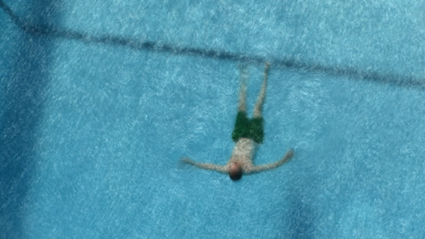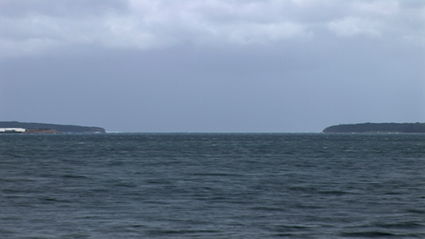AQUA

The mesmerising quality of Fairskye’s recent videos is inherent in the process of their post-production. Since the artist’s intentions are revealed in the description of this process, it may be best to quote the artist’s words at length:
“With my new work Aqua I am doing everything in Final Cut Pro. 50 duplicate layers of video are staggered so that each layer is moved along from one frame to the next. So overall there is a time overlap of two seconds by the end of a particular shot. The opacity of each subsequent layer is progressively decreased, so that by the time you get to layer 50, there is still a visible trace of all the preceding layers, including layer one, but from two seconds earlier. This is an aspect of the process that is crucial from my point of view – a visualisation of temporal depth that is quite different from linear duration.”
“The formation of the images…closely resembles the sequenced exposures of chronophotography by Jules Etienne Marey which (like Bergson’s reflections on time) inspired the painterly experiments of the Futurists….The effect is to condense and dilate the experience of time, by superimposing a sequence of frames in fifty transparent layers. The cinematic division of time into discrete frames is dissolved into the sensation of duration within the image. As past and present fold into each other” the present is thus continuous and coexistent with the past, in a perpetual state of becoming and vanishing”.

The video works in Aqua refine a process first devised for recording airport crowds in Stati d’Animo that explicitly referred to Boccioni’s triptych of that title. In Aqua the scene shifts from airport to a Miami hotel pool viewed from the seventeenth floor. In the blurred movement of the swimmers, the distinction between figure and ground- i.e. body and water- is dissolved, as contour and shape are transformed into an animated blot or stain. As wind and sunlight move across the water, the duration of the trace across the surface of the screen, lyrically recalls the gestural and painterly qualities of Impressionism. The absence of any narrative or discursive frame, distinguishes the improvisational and ambient quality of these simple stationary shots in the broader context of the artist’s film work. This context is ironically acknowledged in photographic fragments of abandoned film-scripts, “aqueous excerpts” in which the desire for dramatic narrative, now elegantly framed as text, remains unrealised as cinematic image.
The juxtaposition of text and image appears to resist allegorical interpretation. Yet, as we contemplate the attenuated white crest of waves from the shore of Botany Bay, it is evident that the digital manipulation and condensation of the image serves to prolong the trace of time, (around the enduring absence of an event). And activate a space for memories to inhabit the here and now.
Michiel Dolk, 2007